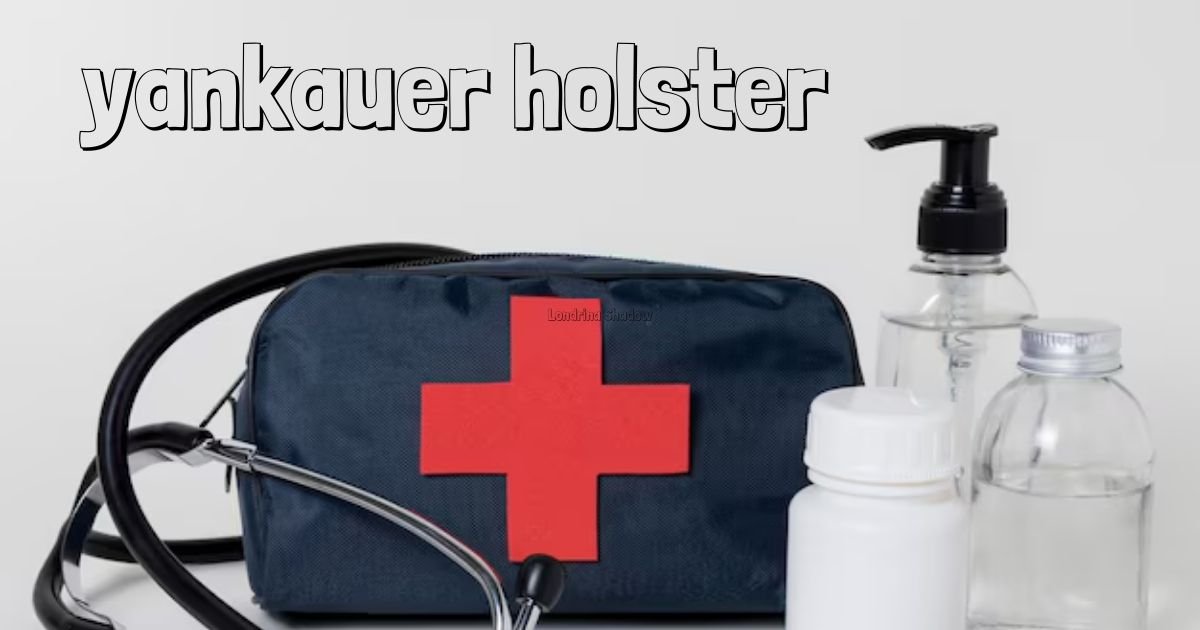In the medical world, efficiency and cleanliness are vital. Among the essential tools in hospitals and clinics is the Yankauer suction device, a crucial component for maintaining airways during surgeries and other procedures. But, what about the tool that holds and keeps it accessible? This is where the Yankauer holster comes into play.
A Yankauer holster might not be the first thing you think of when imagining life-saving medical equipment, but it plays a key role in ensuring that the Yankauer suction tip is always ready for use, clean, and stored properly. In this article, we’ll explore the benefits, uses, and features of Yankauer holsters, helping you understand why they are such a significant part of medical equipment management.
What Is a Yankauer Holster?
A Yankauer holster is a specialized device designed to securely hold the Yankauer suction tool. It is typically mounted on the side of a hospital bed, surgical table, or a wall near the patient’s care area, ensuring the suction tip is within easy reach for healthcare professionals. These holsters are essential for maintaining hygiene and quick access to the Yankauer device during critical situations.
Why Is the Yankauer Holster Important?
In fast-paced medical environments, every second counts. Having the Yankauer suction tool stored safely but accessibly in a holster is crucial. The holster ensures the device is readily available, minimizing the risk of contamination and maintaining the sterility of the suction tip. This makes the tool more efficient and reliable during medical procedures, particularly during surgeries and emergency situations.
Materials Used in Yankauer Holsters
Yankauer holsters are typically made from durable, easy-to-clean materials like plastic or stainless steel. Plastic versions are lightweight and can be easily sterilized, while stainless steel offers more durability and is often used in operating rooms due to its sterile and robust nature. The material chosen for a holster can vary based on the medical setting, frequency of use, and the need for sanitation.
Benefits of Using a Yankauer Holster
The primary benefit of using a Yankauer holster is to maintain the cleanliness and functionality of the Yankauer suction device. But there are other benefits as well:
- Increased Efficiency: By having the Yankauer readily available, healthcare professionals can respond more quickly during emergencies or surgeries.
- Hygiene Control: The holster helps reduce the risk of contamination, ensuring that the suction tip remains sterile between uses.
- Organization: It helps maintain a neat and organized workspace, keeping tools in their designated places and reducing clutter.
- Prolonged Equipment Lifespan: Proper storage minimizes damage to the Yankauer device, extending its usability.
Where Are Yankauer Holsters Used?
Yankauer holsters are used in a variety of healthcare settings, including:
- Hospitals: In operating rooms, emergency rooms, and patient care units.
- Clinics: During outpatient procedures where suction may be needed.
- Ambulances: For paramedics and emergency medical technicians (EMTs) to access the Yankauer suction quickly during transport.
- Home Healthcare: For patients requiring long-term suction devices, a holster can help keep the equipment organized and ready for home use.
Installation of Yankauer Holsters
Most Yankauer holsters are designed for easy installation. They often come with mounting hardware that allows them to be attached to walls, beds, or carts. Some models feature adjustable mounting brackets, allowing for flexible placement in various healthcare settings. Installing a Yankauer holster in the right location ensures that the suction tool is always within arm’s reach during medical procedures.
How to Clean a Yankauer Holster
To ensure patient safety and avoid cross-contamination, Yankauer holsters must be cleaned regularly. The process usually involves:
Disassembling the Holster: If applicable, take apart the holster to reach all areas.
Wiping Down Surfaces: Use hospital-grade disinfectant wipes to clean the surfaces.
Sterilization: In some cases, the holster may be autoclaved, particularly if it’s made of stainless steel.
Drying Thoroughly: Ensure the holster is dry before placing the Yankauer back in to avoid moisture buildup and bacterial growth.
Yankauer Holster Designs and Innovations
Over time, medical tools evolve, and the Yankauer holster is no exception. Modern holsters come with several innovative features, such as:
- Clip-On Designs: These allow the holster to be easily attached to IV poles or other medical stands.
- Magnetic Mounts: In some cases, holsters use magnets for quick placement and removal of the Yankauer device.
- Disposable Holsters: Designed for single-patient use, disposable holsters reduce the risk of cross-contamination between patients.
Selecting the Right Yankauer Holster
When choosing a Yankauer holster, healthcare facilities need to consider several factors:
- Material Durability: Depending on the environment (e.g., operating room vs. ambulance), choose a holster that can withstand the required conditions.
- Ease of Cleaning: Select a holster made from materials that are easy to clean and sterilize.
- Mounting Options: Ensure the holster can be securely mounted in a location that makes the Yankauer easily accessible.
- Compatibility with Yankauer Tip: The holster should snugly fit the specific Yankauer suction tip being used.
The Role of Yankauer Holsters in Infection Control
Infection control is a primary concern in medical settings. By keeping the Yankauer suction tool securely in place, holsters prevent accidental contamination from other surfaces. Sterile storage is critical to ensure that the suction tip remains uncontaminated between uses, thereby reducing the risk of hospital-acquired infections (HAIs).
Cost Considerations for Yankauer Holsters
The cost of Yankauer holsters varies depending on the material, design, and brand. While stainless steel versions may be more expensive due to their durability and sterilization capabilities, plastic options are more affordable and ideal for single-patient use. Facilities need to balance cost with functionality and infection control needs when making a decision.
Conclusion
Yankauer holsters may seem like a small part of the overall medical equipment setup, but they play a significant role in maintaining efficiency, hygiene, and organization in healthcare environments. By ensuring the Yankauer suction tool is always accessible, clean, and secure, these holsters help medical professionals deliver timely and safe patient care. Whether in a high-pressure surgery or routine care setting, the right holster can make all the difference in improving workflow and reducing contamination risks.
FAQs
Can Yankauer holsters be reused?
Yes, most Yankauer holsters are designed for multiple uses, especially if made from durable materials like stainless steel. However, they must be regularly cleaned and sterilized.
How often should a Yankauer holster be cleaned?
It depends on the frequency of use. In high-traffic areas like operating rooms, cleaning after each patient is recommended to prevent cross-contamination.
Are disposable Yankauer holsters available?
Yes, disposable holsters are available for single-patient use to minimize the risk of infection.
Can I install a Yankauer holster at home for personal care?
Yes, Yankauer holsters can be installed in home healthcare settings to keep suction devices organized and accessible.
What materials are best for Yankauer holsters?
Both plastic and stainless steel are commonly used. Stainless steel is more durable and easier to sterilize, while plastic is lightweight and cost-effective.











